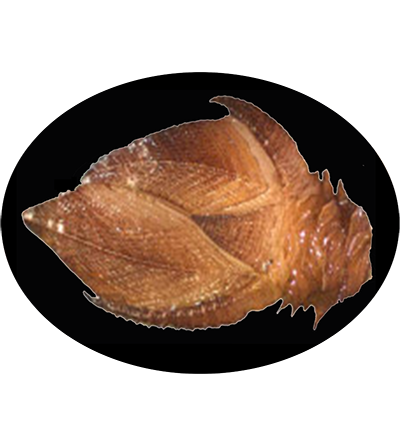
Ashinkailepas kermadecensis is a species of deep-sea stalked barnacle in the family Neolepadidae, discovered at a cold-water seep near the Kermadec Ridge, northeast of New Zealand's North Island, at depths of approximately 1,165 meters. This species is adapted to extreme deep-sea environments, relying on the unique chemical conditions of cold seeps for survival. Its discovery highlights the biodiversity of deep-sea ecosystems and provides valuable insights into the adaptations of organisms to these harsh habitats.
Animalia (Kingdom); Arthropoda (Phylum); Crustacea (Subphylum); Multicrustacea (Superclass); Thecostraca (Class); Cirripedia (Subclass); Thoracica (Infraclass); Thoracicalcarea (Superorder); Scalpellomorpha (Order); Neolepadoidea (Superfamily); Neolepadidae (Family); Ashinkailepas (Genus); Ashinkailepas kermadecensis (Species)
Ashinkailepas kermadecensis Buckeridge, 2009
1. Buckeridge J S. Ashinkailepas kermadecensis, a new species of deep-sea scalpelliform barnacle (Thoracica: Eolepadidae) from the Kermadec Islands, southwest Pacific[J]. Zootaxa, 2009, 2021(1): 57–65-57–65. (Buckeridge et al., 2009)
Neolepadinae having capitular plates ornamented by longitudinal ribs or ridges, capitulum length equal to or longer than that of the peduncle; peduncle (if undistorted) with whorls of six scales which are considerably wider than high.
Japan, northeast New Zealand. A seamount at 1159 metres, off Hatsushima Island, Sagami Bay, Japan (35º00.11’N, 139º13.45’E). hydrothermal vent (24°35′ S, 176°57′ W) at Southwest Pacific Ocean
| Species | Phylum | Common Name | Ecosystem | Depth | Habitat | NCBI Taxonomy ID |
|---|---|---|---|---|---|---|
| Ashinkailepas kermadecensis | Arthropoda | - | Hydrothermal vent | >1000 | hydrothermal vent (24°35′ S, 176°57′ W) at Southwest Pacific Ocean | 1581329 |
| Genome Assembly | Genome Size | Assembly level | Released year | WGS accession | Submitter | BioProject | BUSCO completeness (%) | Scaffold/Contig N50 (kb) | GC content (%) | Repeat Rate (%) | Gene Number |
|---|---|---|---|---|---|---|---|---|---|---|---|
| ASM3444061v1 | 909.2Mb | Contig | 2023 | JAOTOM01 | Korea Research Institute of Bioscience and Biotechnology | PRJNA867042 | 82.40 | - | - | - | - |
| Title | Journal | Pubmed ID |
|---|---|---|
| Comparative genomics reveals the dynamic evolutionary history of cement protein genes of barnacles from intertidal to deep-sea hydrothermal vents | Molecular Biology and Evolution | 37955198 |

